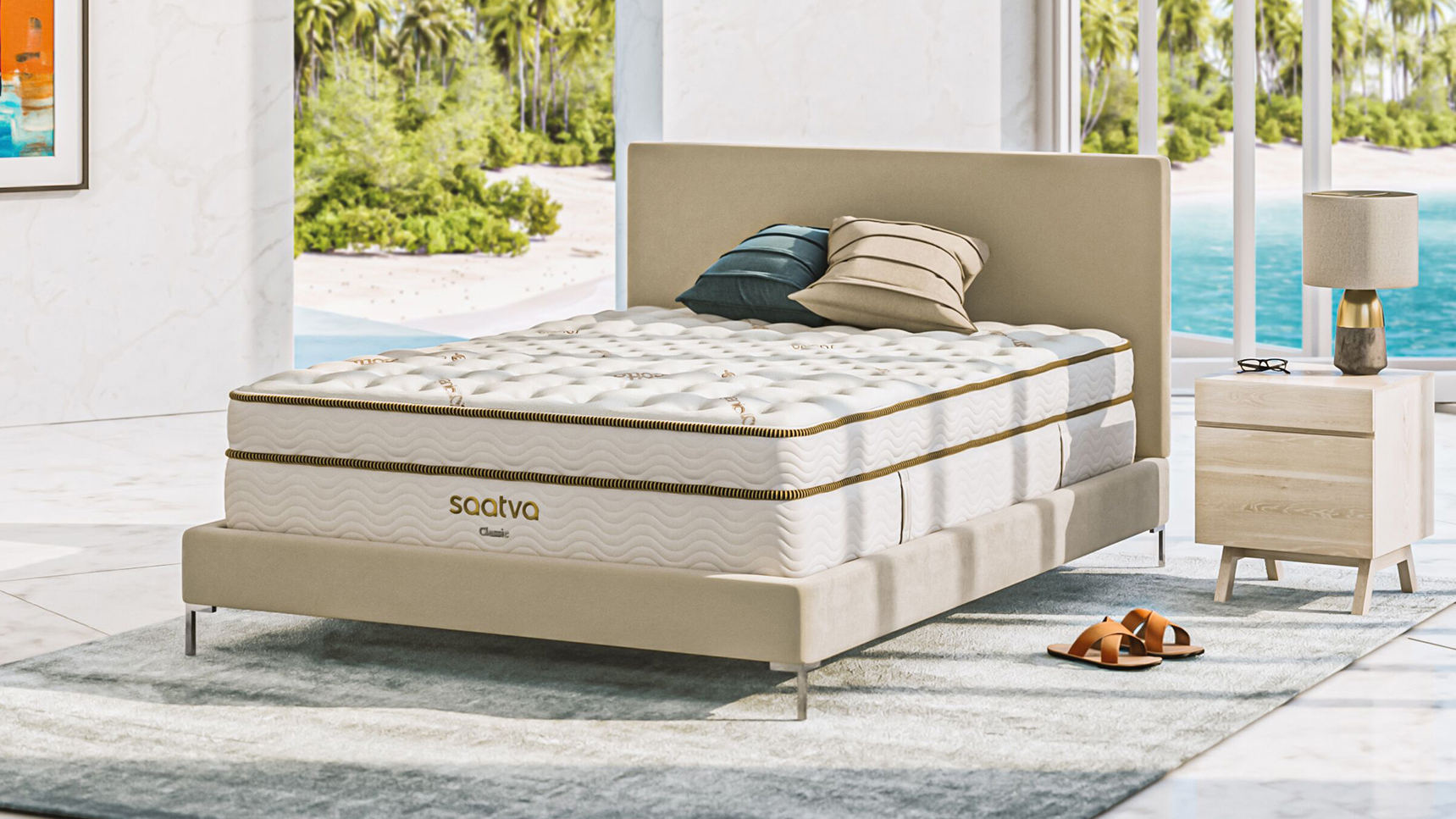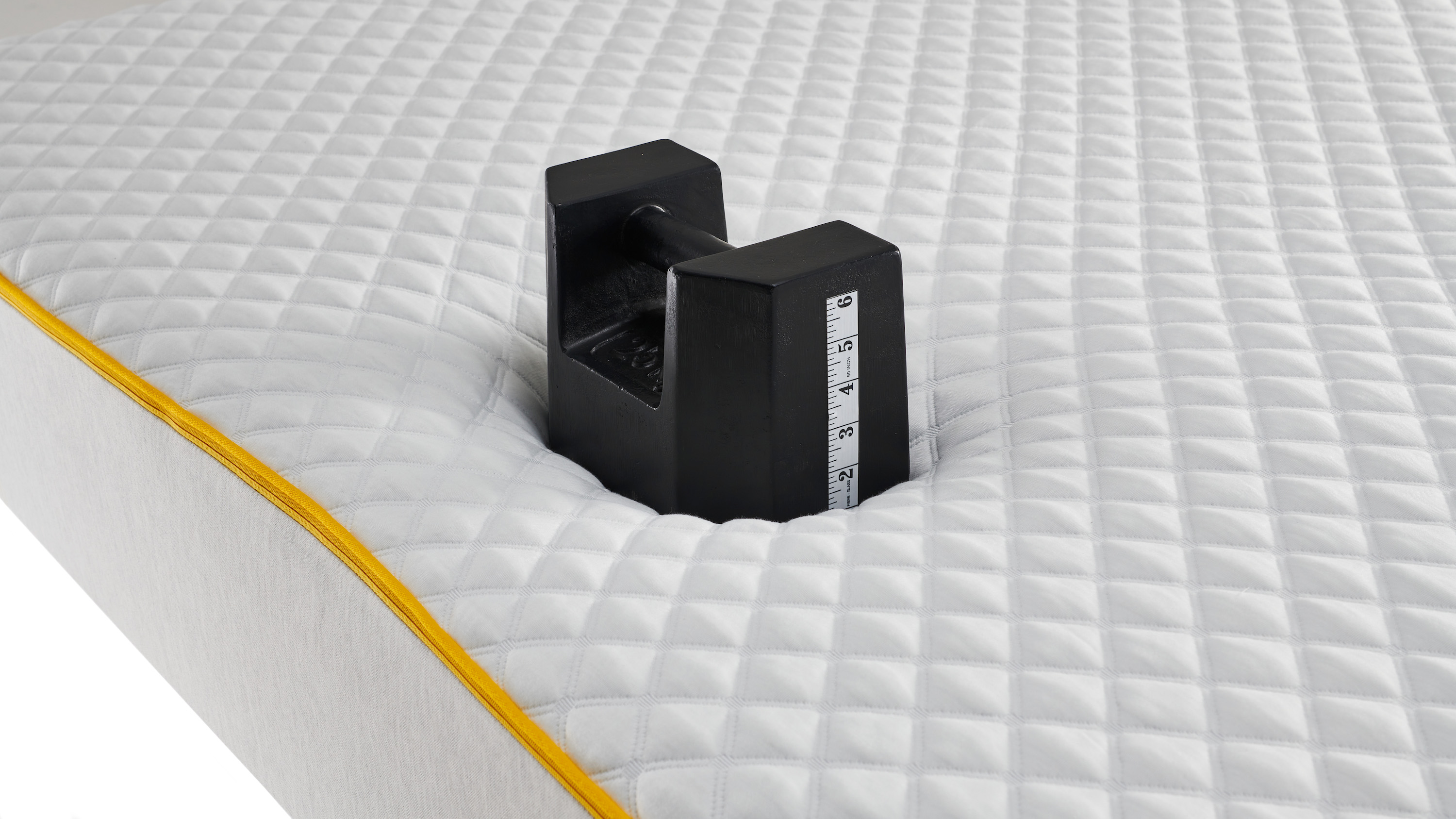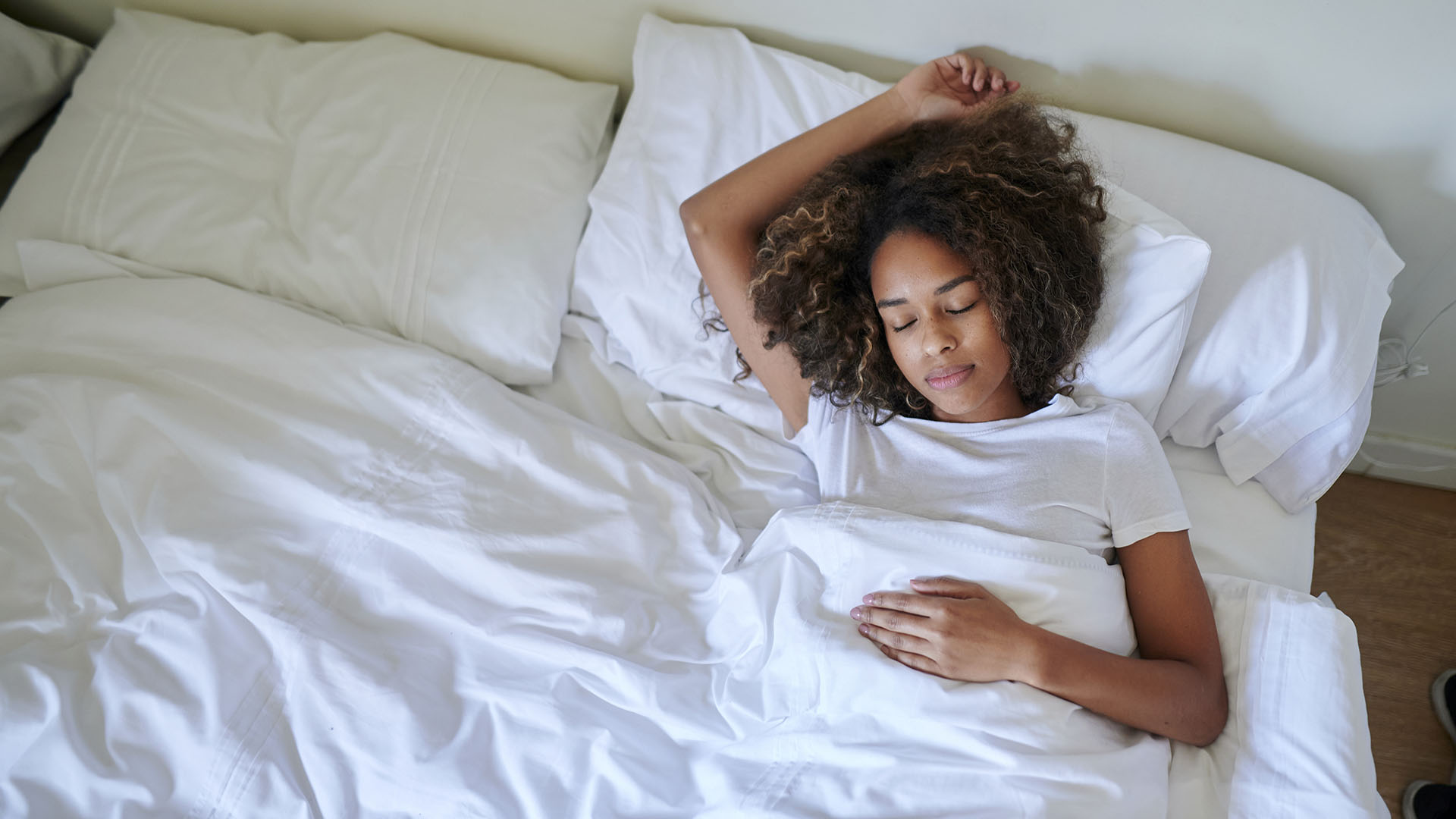Mattress jargon buster — key terms you'll come across when buying a bed
Our easy guide to mattress jargon so you can feel confident when shopping for a new bed

You'll come across lots of jargon when buying a mattress online. From 'pressure relief' to 'motion isolation', you'll see the same terms popping up across multiple brands and retailer when you're shopping for a new bed. Knowing these terms will help you feel more confident when shopping the best mattress for your sleep needs and budget.
I've been testing traditional and boxed mattresses for several years, so I'm well-versed in 'mattress talk'. Here I've compiled a list of the most common mattress terms you're likely to come across, so you'll know what manufacturers are talking about when they mention things like 'reinforced edge support' and ‘recovery time’.
So if you're shopping this year's Memorial Day mattress sales for a good discount on a great new bed, gen up on these key terms first to help make your shopping experience easier and faster.
Today's best mattress sales
- Saatva: Get $400 off our top-rated bed
- Tempur-Pedic: up to $2,399 off cooling beds
- DreamCloud: up to 50% off our top Saatva rival
- Helix Sleep: 30% off + two free pillows
- Casper: up to 35% off foam and hybrid
- Avocado: up to 20% off organic mattresses
- Bear: 35% off + $500 of free bedding
Mattress jargon buster: Key terms explained
Adjustable base compatibility – the degree to which a mattress can be elevated (top, bottom or simultaneously) or bent into an upright position on top of an adjustable bed base. This is particularly useful if you need a bed to help stop or reduce snoring.
Antimicrobial materials – usually cotton, fiber or foam that has been treated to prevent the growth of dust mites, bacteria and fungi.
Box spring – a wooden (or metal) frame filled with a secure set of wire coils to support your mattress, improve airflow, and absorb shock. However, most modern mattresses don't require a box spring, and using one could possibly invalidate your warranty.
Certified organic – applies to mattress materials that are organic and Global Organic Textile Standards (GOTS) certified. You'll find a lot of GOTS-certified materials inside the best organic mattresses.
Coils / coil springs – wires, formed in the shape of spirals, usually found in the support layer of an innerspring or hybrid beds. Our guide to the best hybrid mattresses will talk you through our top picks.
Comfort layers – these live at the top of the mattress and are responsible for how comfy the mattress feels when you lie on it.

Cushioning depth – this measures how far you sink into the mattress and how much it conforms to your body. The best memory foam mattresses are an ideal choice for anyone seeking maximum cushioning and a body-hug feel.
Ease of repositioning – how well the mattress supports you when you’re moving into a new sleeping position.
Firmness – used to describe the compression resistance of a mattress, and also how soft or hard the surface is when you lie on it. You'll often see firmness rated on a 10-point scale, with 10 being the firmest.
Hypoallergenic – mattresses made from materials that are less likely to cause an allergic reaction. You’ll see this term used a lot on organic and natural mattresses.
Motion isolation – how much movement can be felt on either side of the mattress. If you share with a restless sleeper, motion isolation is important so that you aren’t disturbed by your partner's movements.
Moisture wicking – this refers to how well the materials used within the cover are able to wick away moisture, keeping the mattress fresher, drier and more breathable. Even then, we'd still recommend investing in a great mattress protector to keep your bed safe from sweat stains, body oils, spills and more.

Off-gassing – the smell that accompanies some mattresses when they are unboxed. This is normal and the smell is caused by certain chemicals evaporating into the air. We cover this in more detail in our feature: what is mattress off-gassing.
Orthopedic mattress – if you grapple with back pain, an orthopedic mattress will support your posture and keep your spine aligned. It offers a firmer feel than most beds. Learn more in our feature answering what is an orthopedic mattress.
Pressure relief – This refers to how much a mattress minimizes pressure points on your body when you’re lying down. Common points of pressure are the shoulders, hips and back. Without good pressure relief, you could be dealing with soreness, loss of circulation, and restlessness due to in-bed discomfort. The best mattresses for back pain offer superior pressure relief.
Recovery time – the speed with the mattress returns to its normal shape after being compressed.
Reinforced edge support – keeps your mattress stable and supportive by creating a solid structure around it, and ensures you can sleep up to the edge of your mattress or sit on the corners to take your shoes on/off. Edge support is achieved with materials such as foam, steel rods or thick coils.
Sagging – refers to dipping or a loss of support in specific areas of the mattress. Sagging occurs mainly in older mattresses. For more, see our guide to: how often should you replace your mattress guide.

Sleep style – also known as your sleep position, this is the position your body naturally drops into when you fall asleep. This will largely influence the type of mattress you need. For example, the best mattresses for side sleepers will offer ample pressure relief along the hips and shoulders whilst keeping the spine neutral.
Temperature regulation – unless a mattress is designed with cooling technology, temperature regulation refers to how well the materials inside the mattress stay temperature neutral while you're sleeping. If you sleep very hot or are dealing with night sweats, a good cooling mattress should be top of your list.
Trial period – also known as the sleep trial or break-in period. This refers to the length of time you are given by the manufacturer to test your new mattress at home. For more on trials, read our guide to mattress trials and how they work.
Warranty – the manufacturer’s policy outlining what it will and won’t cover in terms of repairing or replacing the product if faults occur within a specific period of time. Learn more about mattress warranties and how they work .
Sign up to get the BEST of Tom's Guide direct to your inbox.
Get instant access to breaking news, the hottest reviews, great deals and helpful tips.

Claire is a qualified journalist and Certified Sleep Science Coach with over 16 years’ product review experience, and who is connected to a wealth of globally renowned sleep experts including mattress designers and buyers, neuroscientists, and doctors of sleep medicine. Claire is responsible for all mattress and sleep content published on Tom’s Guide and is our expert on Saatva, DreamCloud, and Nectar mattresses. Claire is also certified to advise people on how to choose a mattress that suits their needs and budget, as well as helping them to create a nighttime routine and bedroom environment that helps them sleep better. As our Senior Sleep and Mattress Editor, Claire oversees our rigorous testing procedures for our mattress reviews, while leading our team of specialist reviewers and writers who report on all the latest sleep products.
